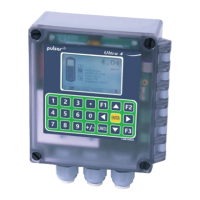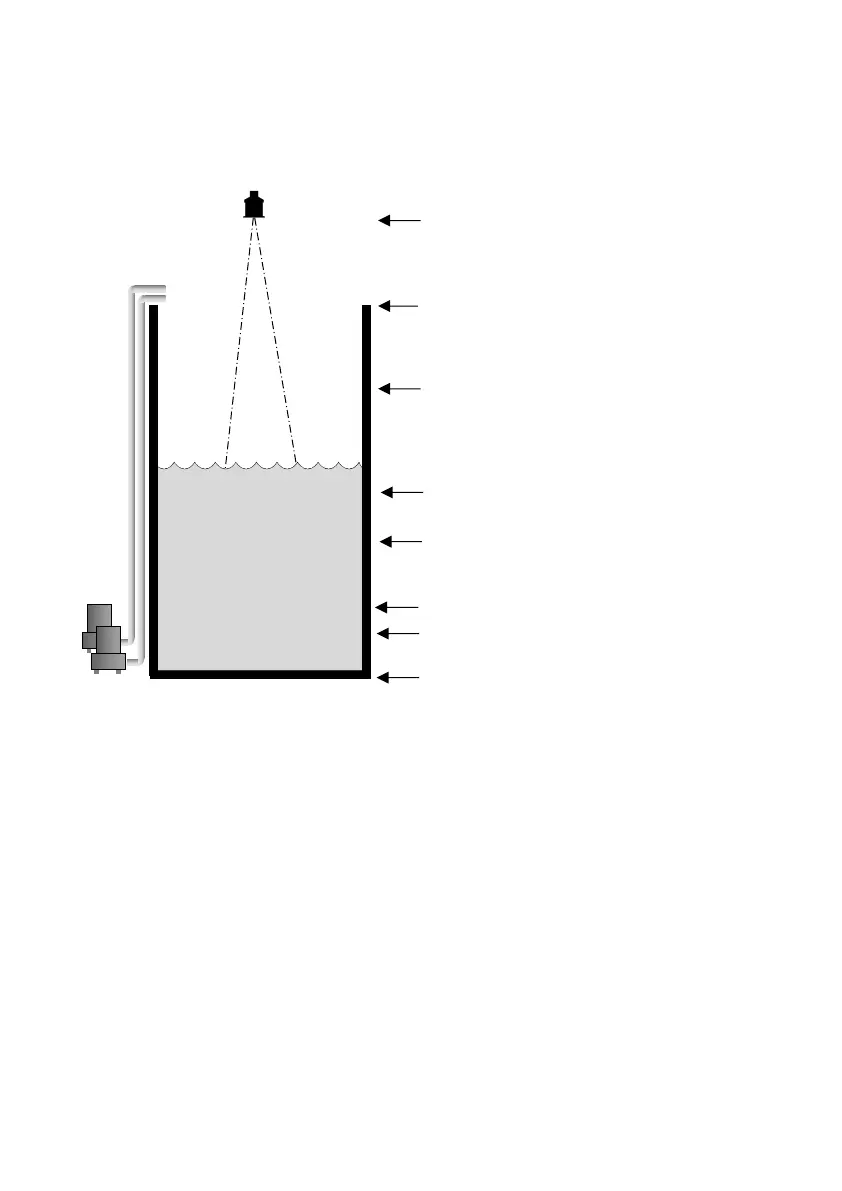PULSAR MEASUREMENT
73
Example 6 Reservoir Control (pump up)
A reservoir is typically used to temporarily hold liquid, and when the level
reaches a specific low point, the reservoir is pumped up.
In this example, there are two pumps, which will be set to alternate duty
assist, so they come on alternately. Pump 1 is to be set to relay 2, pump 2 to
relay 3, and the low-level alarm to relay 1. This will operate as follows:
During normal operation, pump 1 will come on at 1.4m (4.59 ft) and pump
up to 2.24m (7.34 ft). The setpoints are then shifted to pump 2, which will
come on first next time.
During peak periods, when pump 1 cannot cope, pump 1 will come on at
1.4m (4.59 ft) and pump 2 will come on at 0.84m (2.75 ft) and pump up to
2.24m (7.34 ft). The setpoints are then shifted to pump 2, which will come
on first next time. If both pumps cannot cope, and the level drops to
0.28m (0.91 ft), then the alarm relay (relay 1) will come on and go off when
the level rises to 0.42m (1.37 ft). This will indicate insufficient capacity of the
pumps. The display will show the level in the sump and the mA output will

